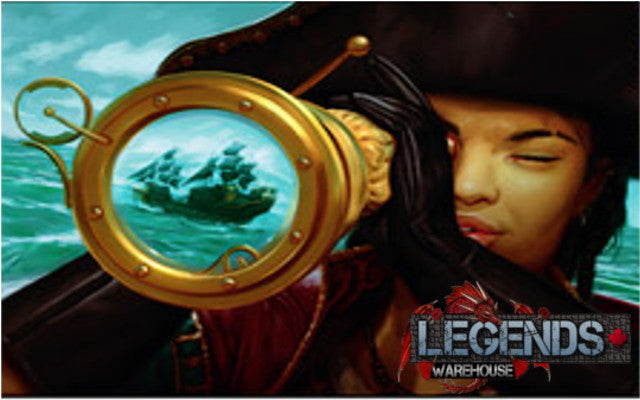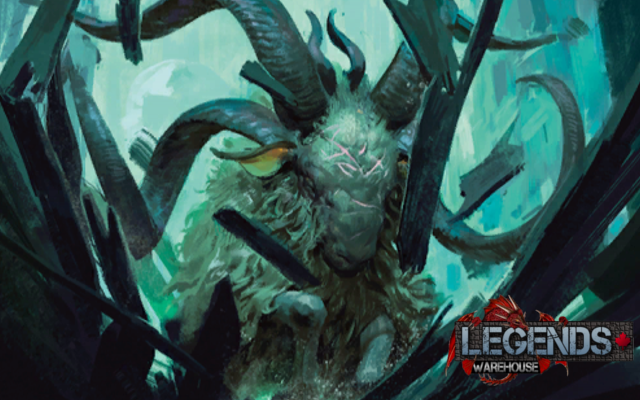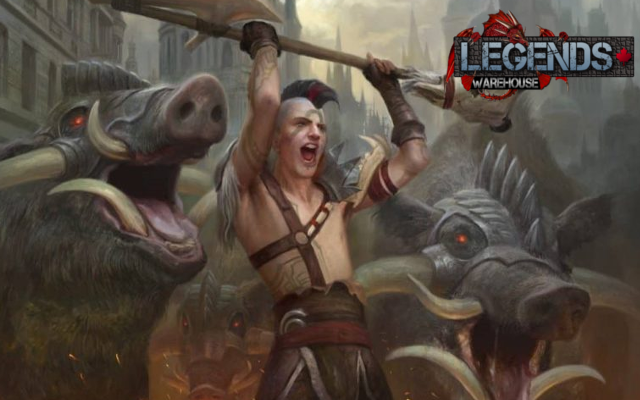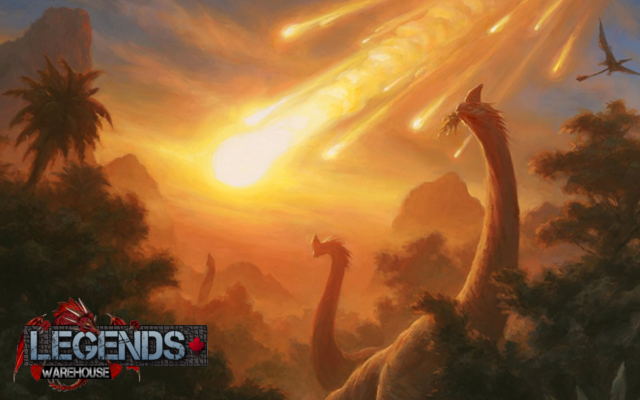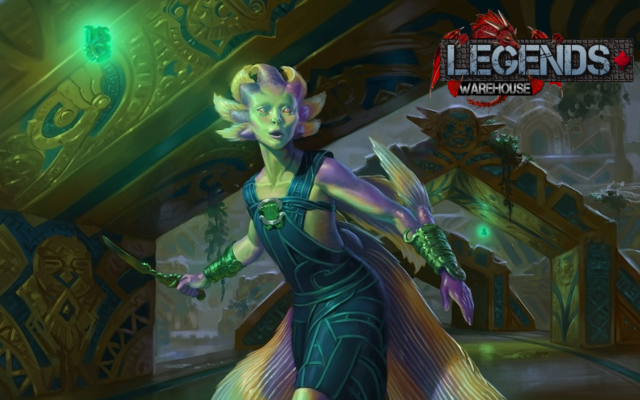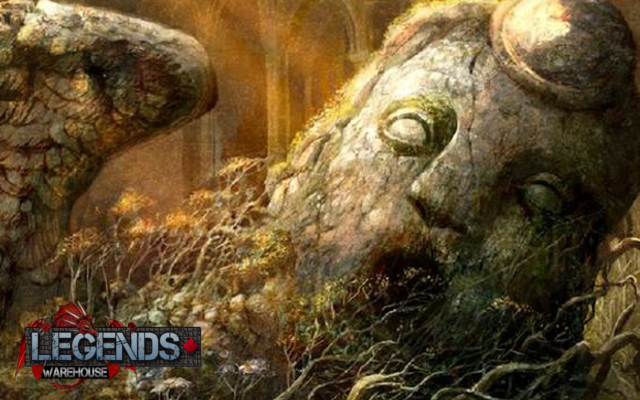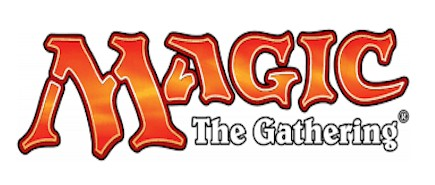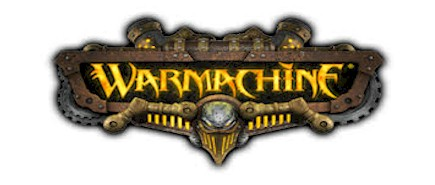A First Look at Ixalan Sealed
- Legends Warehouse News
- 19 Sep, 2017
With the Ixalan prerelease on the horizon, we’re all chomping at the bit to get our hands on some sweet new cards. Every set brings with it new challenges for Sealed due to the limited card pool, and the unpredictability of playing what you open can lead to some very high variance games. There’s no telling what you’re going to be up against, so the best thing to do to prepare yourself is to make sure your deck is streamlined enough to roll with the punches no matter what you face. In order to do this, it’s important to know what potential archetypes there are in a Sealed format and what cards are needed to actually support them.
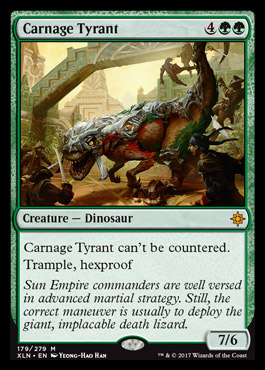
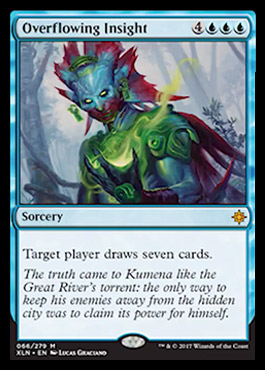
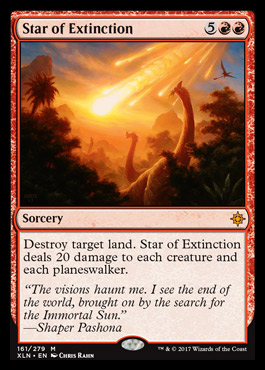
Ixalan is a tribal set with a focus on dinosaurs, pirates, vampires, and merfolk. Each tribe has plenty of support, and while it’s much easier to build a cohesive tribal deck in draft, it’s still very possible to do the same in Sealed, despite having far less control over what your card pool is. There are strengths and weaknesses to each tribe, and understanding them is essential when it comes time to pick and choose which cards are going into your deck. Sealed is a strange animal in that unless your pool is absolutely insane, you’re going to be splashing cards fairly often, be they of a different colour or a different tribe. For example, you may be able to build a predominantly pirate deck, but if there’s a certain vampire or dinosaur in your pool that fits your curve, you will probably run it to fill out your deck, regardless of whether it actually supports your deck or not.
One of the most hyped up tribes in Ixalan is dinosaurs, and for a good reason. These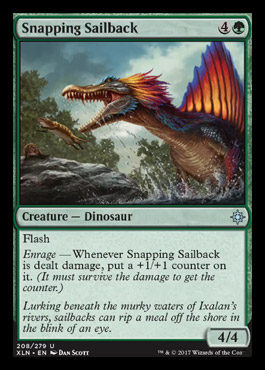 behemoths boast impressive stats and plenty of support cards to help alleviate some of their weaknesses. WotC has done a tremendous job of showcasing smaller dinosaurs to ensure that they aren’t relegated to the “big, slow midrange” tribe that has been done to death every time they’ve done tribal so far. This means that it’s far easier to build a viable deck with dinosaurs all along your curve so you can still play with them even if you didn’t open many support cards. However, if you opened supporters like Opetec Huntmaster or Kinjalli’s Caller, your bigger dinosaurs will be coming down much earlier than your opponents are expecting. Colossal Dreadmaw and Sun-Crowned Hunters are powerful commons that will probably make up the backbone of many a dinosaur deck, and can each easily take over games against smaller tribes.
behemoths boast impressive stats and plenty of support cards to help alleviate some of their weaknesses. WotC has done a tremendous job of showcasing smaller dinosaurs to ensure that they aren’t relegated to the “big, slow midrange” tribe that has been done to death every time they’ve done tribal so far. This means that it’s far easier to build a viable deck with dinosaurs all along your curve so you can still play with them even if you didn’t open many support cards. However, if you opened supporters like Opetec Huntmaster or Kinjalli’s Caller, your bigger dinosaurs will be coming down much earlier than your opponents are expecting. Colossal Dreadmaw and Sun-Crowned Hunters are powerful commons that will probably make up the backbone of many a dinosaur deck, and can each easily take over games against smaller tribes.
Where dinosaurs lose a bit of footing is that if you try to play them on curve, you can get swarmed very quickly. By the time turn six rolls around most other tribes have already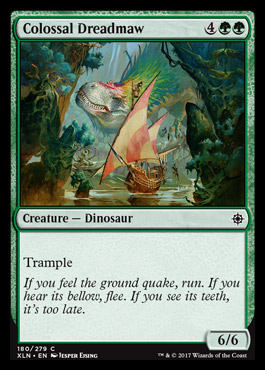 played at least four creatures, so you need to really accelerate your threats. As such, while they don’t specifically refer to dinosaurs, creatures with the Explore mechanic make fantastic additions to any dinosaur deck since they either make sure you hit your land drops or act as early roadblocks to trade with opposing threats, thus buying you plenty of time to drop your haymakers. There are also several dinosaurs, such as Looming Altisaur and Spike-Tailed Ceratops that play very powerful defensive roles that are necessary for stabilizing the ground game. As well, since you’re in three colours, you have access to plenty of removal. Lightning Strike, Dual Shot, and Slash of Talons are perfect for picking off the smaller threats that come down early in vampire and pirate decks, and even cards like Savage Stomp can be used to both grow your dinosaurs and kill larger threats.
played at least four creatures, so you need to really accelerate your threats. As such, while they don’t specifically refer to dinosaurs, creatures with the Explore mechanic make fantastic additions to any dinosaur deck since they either make sure you hit your land drops or act as early roadblocks to trade with opposing threats, thus buying you plenty of time to drop your haymakers. There are also several dinosaurs, such as Looming Altisaur and Spike-Tailed Ceratops that play very powerful defensive roles that are necessary for stabilizing the ground game. As well, since you’re in three colours, you have access to plenty of removal. Lightning Strike, Dual Shot, and Slash of Talons are perfect for picking off the smaller threats that come down early in vampire and pirate decks, and even cards like Savage Stomp can be used to both grow your dinosaurs and kill larger threats.
Pirates are the other tribe receiving a lot of attention, and by being yet another tri-colour tribe it presents itself with similar challenges to dinosaurs. While the higher mana cost 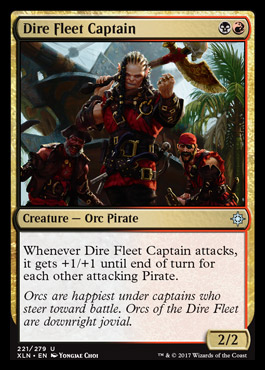 of the dinosaurs makes it much easier to go three colours and still hit your colours on curve, Pirates are set up to be a more aggressive tribe. This makes it much harder to run all three colours in the same deck and hit your curve reliably. For the most part Pirate decks will likely end up in two-colour pairings, Black-Red, Blue-Red, or Black-Blue, with each one focusing on a different aspect of the pirate mechanics. Black-Red and Blue-Red are set up to be the most aggressive with both pairings set up to abuse the Raid mechanic. Raid incentivizes you to play fast and small creatures so you can start attacking early to trigger raid abilities in your second main phase. Rigging Runner, Siren Stormtamer, and even non-pirates like Skittering Heartstopper and Nest Robber are essential for getting your raid going as fast as you can. Raid also allows you to bluff combat tricks since you won’t be tapping your mana in your precombat main phase. This means your opponent will either have to try to play around a combat trick or deal with whatever raid trigger you’re going to play later.
of the dinosaurs makes it much easier to go three colours and still hit your colours on curve, Pirates are set up to be a more aggressive tribe. This makes it much harder to run all three colours in the same deck and hit your curve reliably. For the most part Pirate decks will likely end up in two-colour pairings, Black-Red, Blue-Red, or Black-Blue, with each one focusing on a different aspect of the pirate mechanics. Black-Red and Blue-Red are set up to be the most aggressive with both pairings set up to abuse the Raid mechanic. Raid incentivizes you to play fast and small creatures so you can start attacking early to trigger raid abilities in your second main phase. Rigging Runner, Siren Stormtamer, and even non-pirates like Skittering Heartstopper and Nest Robber are essential for getting your raid going as fast as you can. Raid also allows you to bluff combat tricks since you won’t be tapping your mana in your precombat main phase. This means your opponent will either have to try to play around a combat trick or deal with whatever raid trigger you’re going to play later.
The other aspect of pirates is treasure tokens. These are basically like Lotus Petals or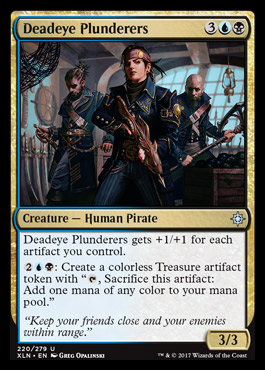 Tezzeret the Schemer’s Etherium Cells in that they are artifacts that you can sacrifice for a mana. These give you a ton of flexibility since you can tap out to play something on your turn and still have mana available to cast instants during your opponent’s turn. There are also powerful cards like Revel in Riches, Deadeye Plunderers, and Desperate Castaways that care about having treasure tokens in play, so having enough treasure-generating effects are integral to supporting them. For example, Spell Swindle and Contract Killing are perfect control cards capable of stopping some of the bombs in the dinosaur deck and generating treasure tokens, whereas Pirate’s Prize and Depths of Desire give you card advantage and tempo as well as additional tokens. These treasure tokens allow you to play some of the bigger bombs in the format, such as Fleet Swallower or even off-colour threats since treasure tokens can make any colour of mana.
Tezzeret the Schemer’s Etherium Cells in that they are artifacts that you can sacrifice for a mana. These give you a ton of flexibility since you can tap out to play something on your turn and still have mana available to cast instants during your opponent’s turn. There are also powerful cards like Revel in Riches, Deadeye Plunderers, and Desperate Castaways that care about having treasure tokens in play, so having enough treasure-generating effects are integral to supporting them. For example, Spell Swindle and Contract Killing are perfect control cards capable of stopping some of the bombs in the dinosaur deck and generating treasure tokens, whereas Pirate’s Prize and Depths of Desire give you card advantage and tempo as well as additional tokens. These treasure tokens allow you to play some of the bigger bombs in the format, such as Fleet Swallower or even off-colour threats since treasure tokens can make any colour of mana.
The Black-White Vampire deck might be the most aggressive in the format as it has several ways of making 1/1 tokens with lifelink. This allows you to go wide, and with spells that can pump multiple creatures like Rallying Roar you can close out games fairly quickly. There are also a lot of bombs that can abuse the number of tokens you can make. Sanctum Seeker and Bishop of the Bloodstained can each cause massive amounts of life loss the more vampires you have in play, so with enough token making effects you can drop these cards and finish off your opponents.
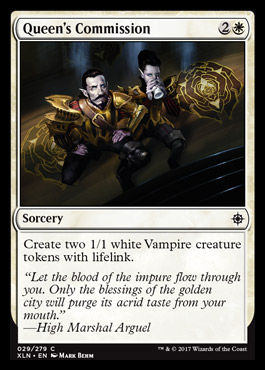
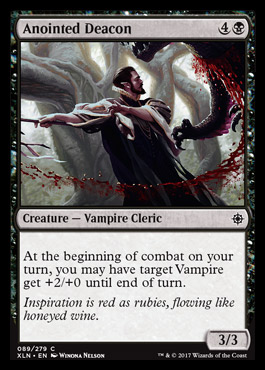
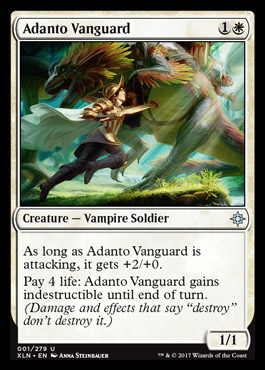
Vampires also has an advantage over other smaller aggro decks due to the amount of life gain effects they have. Lifelinkers like Bishop’s Soldier and Queen’s Agent can provide steady and repeatable life gain to help keep your life total ahead of your opponents and to cover for the variety of cards that get stronger when you pay life. This way you can fully power up your creatures with little impact on your life total. This means you’ll do better against Pirate decks, but because most dinosaurs deal their damage in large chunks, gaining small increments of life won’t be as effective.
Merfolk are in a peculiar spot because they either focus on building themselves up with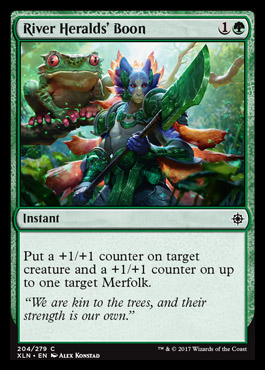 +1/+1 counters or go wide with tokens, and it’s easy to get stretched too far between the two strategies. Of the two, I personally find the +1/+1 counter theme to be much stronger for Sealed because the core card for the wide strategy, Deeproot Waters, requires at least ten other Merfolk to really get going. This is much easier to accomplish in Draft where you can pick the cards you get, but for Sealed there’s no guarantee you’ll have a sufficient number of Merfolk to make those tokens. In Sealed, you’re going to be looking for River Herald’s Boon, Jade Guardian, and Vineshaper Mystic first and foremost since they are able to pump up your more evasive Blue Merfolk. Putting those counters on an unblockable River Sneak can rack up damage very quickly, so I would consider these cards to be integral to any Merfolk deck.
+1/+1 counters or go wide with tokens, and it’s easy to get stretched too far between the two strategies. Of the two, I personally find the +1/+1 counter theme to be much stronger for Sealed because the core card for the wide strategy, Deeproot Waters, requires at least ten other Merfolk to really get going. This is much easier to accomplish in Draft where you can pick the cards you get, but for Sealed there’s no guarantee you’ll have a sufficient number of Merfolk to make those tokens. In Sealed, you’re going to be looking for River Herald’s Boon, Jade Guardian, and Vineshaper Mystic first and foremost since they are able to pump up your more evasive Blue Merfolk. Putting those counters on an unblockable River Sneak can rack up damage very quickly, so I would consider these cards to be integral to any Merfolk deck.
The Blue Merfolk also have powerful tempo capabilities to swing the course of a game in your favour. Tempest Caller is one of the most powerful non-rare Merfolk for Limited since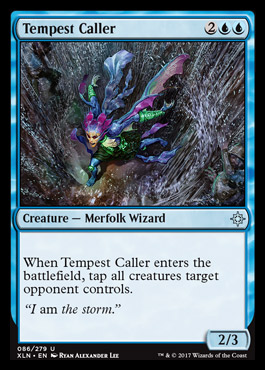 it can tap down all of your opponent’s blockers for a lethal attack. Sealed is known for boards being stalled out on the ground as it becomes more and more risky to attack, so being able to break a board stall in the late game is a necessity. While it doesn’t have as much reach as Tempest Caller, Watertrap Weaver is a strong common for any Blue deck. Locking down the opponent’s biggest creature for a turn can both give you tempo when you’re going aggressive and buy you time to stabilize when you’re falling behind on board. As well, there are several Merfolk that, for some reason or another, have flying. While the card Favorable Winds has been reprinted in the set, I actually think this card is a bit of a trap since there’s a high chance a Sealed pool won’t have enough fliers to take advantage of it. There are only about twelve cards in the set that have or give flying, and several of them are rares. I feel like this might be a trap for this particular Limited format, and this reprint is really more for the Constructed audience.
it can tap down all of your opponent’s blockers for a lethal attack. Sealed is known for boards being stalled out on the ground as it becomes more and more risky to attack, so being able to break a board stall in the late game is a necessity. While it doesn’t have as much reach as Tempest Caller, Watertrap Weaver is a strong common for any Blue deck. Locking down the opponent’s biggest creature for a turn can both give you tempo when you’re going aggressive and buy you time to stabilize when you’re falling behind on board. As well, there are several Merfolk that, for some reason or another, have flying. While the card Favorable Winds has been reprinted in the set, I actually think this card is a bit of a trap since there’s a high chance a Sealed pool won’t have enough fliers to take advantage of it. There are only about twelve cards in the set that have or give flying, and several of them are rares. I feel like this might be a trap for this particular Limited format, and this reprint is really more for the Constructed audience.
Ixalan Sealed is looking to be a diverse and fairly well balanced format. Unlike some tribal sets of the past, there’s depth to each tribal archetype that ensures each style of deck is viable. The dinosaurs have bodies all along the curve while the pirates have different playstyles based on the colour pairing. The vampires have the ability to go wide and gain life to race opponents, and the merfolk have the tempo necessary to break board states and can grow to overwhelm smaller tribes. Each deck is more than capable of winning, and there are plenty of ways to support your deck even if you don’t have enough creatures of a single tribes, and this is why I have high hopes that Ixalan will be one of the most enjoyable Limited sets we’ve seen in quite some time.


